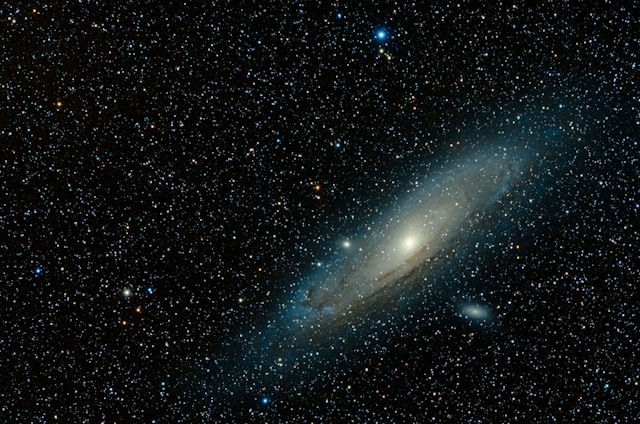Astronomy research gives us a fascinating peek into the vast universe around us, helping to answer big questions about where we come from and how the cosmos works. Whether you’re exploring the behavior of distant stars or the properties of nearby planets, the findings can be genuinely awe-inspiring. Writing a research paper in astronomy isn’t just about gathering data; it involves crafting a story that connects your discoveries to the broader scientific community. This article will guide you through the critical steps to create a compelling research paper, from picking a topic that interests you to presenting your findings clearly and engagingly.
Understanding the Scope of Your Research
When you begin an astronomy research paper, finding a topic that grabs your attention is crucial. This could be anything from the mysteries of black holes to the dynamics of comets. Choose something that fascinates you and adds to the ongoing conversations in the astronomy community.
After picking a topic, it’s time to narrow down precisely what you want to explore. Develop straightforward, focused research questions that will guide your investigation. What are the specific aspects of the topic you’re curious about? Then, set your objectives—these are the goals you hope to achieve by the end of your research. They keep your project on track and ensure that every step you take builds towards a meaningful conclusion. Defining these elements early on makes your research journey smoother and more purposeful.
Conducting Thorough Research
Ensuring your findings are clearly and professionally presented when tackling an astronomy research paper can be crucial. Services like essay schreiben lassen can help you articulate complex scientific ideas effectively. Here’s where you can gather the data you need:
- Scholarly Journals: Read peer-reviewed articles in “The Astrophysical Journal” or “Astronomy & Astrophysics” to gain the latest insights and research findings.
- Observatories and Space Agencies: Explore websites of key organizations such as NASA, which offer a wealth of data essential for astronomical research.
- Specialized Databases: For detailed and structured data, utilize resources like the NASA/IPAC Extragalactic Database (NED) or the European Space Agency’s Gaia archive.
Using up-to-date and peer-reviewed information is vital. The field of astronomy evolves rapidly, and incorporating the most current data ensures your research remains relevant and contributes effectively to scientific discussions.
Organizing Your Findings
After collecting your data, the next step is to put everything together in a way that tells a clear and engaging story. Here’s a straightforward approach to structuring your astronomy research paper:
- Introduction: Start by grabbing attention with an introduction that outlines your main question and explains why your research matters.
- Methodology: Detail the methods you used to gather your data. Be clear and precise so that someone else can follow in your footsteps and replicate your study.
- Results: Use graphs, charts, and tables to show your data visually. These tools make it easier for your readers to see what you’ve learned without getting lost in the numbers.
- Discussion: Discuss how your findings fit into the bigger picture of what’s already known, point out any surprises, and suggest ideas for future research.
Adding diagrams and images is a great way to clarify complex information. They make your paper more enjoyable and help ensure your audience can easily understand your discoveries.
Drafting the Research Paper
Drafting your astronomy research paper involves clear communication and a keen eye for detail. Here’s how to ensure your paper is both clear and engaging:
- Clear Structure: Maintain a logical flow—begin with the introduction, follow with methodology, present your results, discuss their implications, and conclude with a summary of your findings.
- Simple Language: Use straightforward language to make complex ideas accessible. Avoid technical jargon as much as possible; when you use it, provide clear definitions.
- Consistent Style: Keep your writing style consistent throughout the paper. This includes maintaining the same tense, voice, and person.
- Proofreading: Take the time to revise and edit your paper thoroughly. A well-polished draft is crucial for a professional presentation of your research.
Sometimes, conveying intricate scientific concepts effectively can be a challenge. This is where a ghost writer can step in to help. Their expertise can enhance your paper’s quality, making it more professional and more compelling to your readers.
Citing Sources and Avoiding Plagiarism
Citing sources correctly is vital in research to maintain the trustworthiness of your work and to show respect for the original ideas of others. Every time you use information from another study, proper citation helps you avoid plagiarism and upholds the scientific integrity of your paper.
Several tools can help you make citing easier and ensure you get it right. Software like EndNote, Zotero, and Mendeley helps you organize your references and format them correctly, whether you need APA, MLA, or Chicago style. These tools also have features to check your work for plagiarism, helping to keep your paper original and authentic.
Finalizing and Reviewing
Finalizing your astronomy research paper requires a thorough review to ensure clarity and accuracy. Start by reviewing your draft, checking that your ideas flow smoothly, and your data is presented correctly. Make sure every section connects logically and that your research supports your conclusions well. It’s time for peer review once you’re happy with your revisions. This is where other experts in your field review your paper and offer feedback. Peer review is an integral part of the academic process because it helps ensure the quality and reliability of your research.
Conclusion
Writing an astronomy research paper is a journey that involves choosing a great topic, doing thorough research, organizing your findings, and making sure everything is clear and well-cited. Following these steps, you can create a paper that contributes something meaningful to the field. For anyone passionate about astronomy, research, and writing are ways to explore the universe and share your discoveries with others. Don’t be afraid to dive in—your work could help expand our understanding of the cosmos.



















